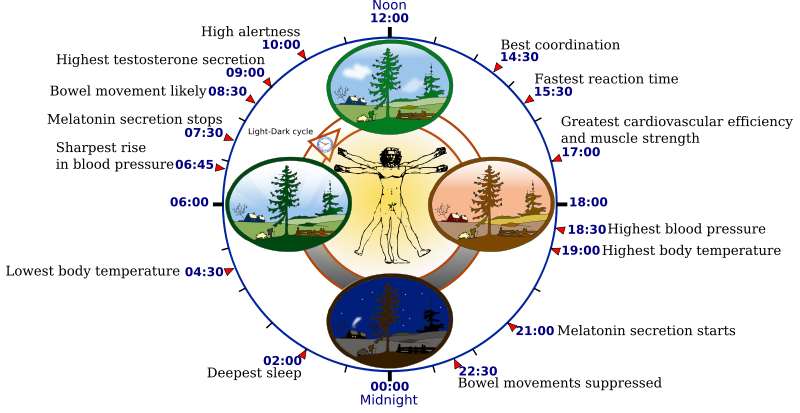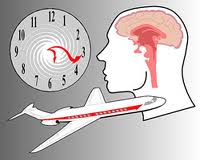Daily Update 4.6
Week 8: Module 4: Date 3/20/13
Yesterday we learned about the stages of sleep. Today we are going to look at what drives our sleep schedule. Why do we feel sleepy at night? Our schedules, as is the case with many other organisms, are driven by circadian rhythms. These are defined as any biological process that revolves on a 24 hour schedule. This rhythm is important in regulating not only when we feel tired but also when we are hungry, the effect of these rhythms can also be seen in hormone production, cell regeneration and brain wave activity. This image gives an example of a daily circadian rhythm. 
The circadian rhythms in humans are self-sustained yet they can be influenced by external factors, the most common of which is light, which is why we usually feel sleepy at night. Our biological clock is what drives the circadian rhythm and is located within the hypothalamus. This grouping of nerves collects information from the body’s receptors, e.g. the eyes, and then regulates the circadian rhythm to match these stimuli.
An example of how circadian rhythm and your biological clock work together is jet lag. If you fly across the country and experience a time difference of three hours your circadian rhythm is disrupted. This occurs because your body’s receptors are receiving different input, i.e. you wake at 7 a.m. to the sunrise when your circadian rhythm still thinks its 4 a.m. Your biological clock will adjust your circadian rhythm but it usually takes a few days, as any of you who have experienced jet lag know all too well.

If you recall from yesterday’s update the crew has quite an intense schedule of rowing interspersed with sleeping, eating and working. If their longest period of sleeping is only 4 hours, how do you think this will affect their circadian rhythm and how will that affect their rowing ability. Tomorrow we will look at the research they are doing involving sleep and physical activity.
Sources:
http://www.nigms.nih.gov/Education/Factsheet_CircadianRhythms.htm
https://en.wikipedia.org/wiki/Circadian_rhythm
